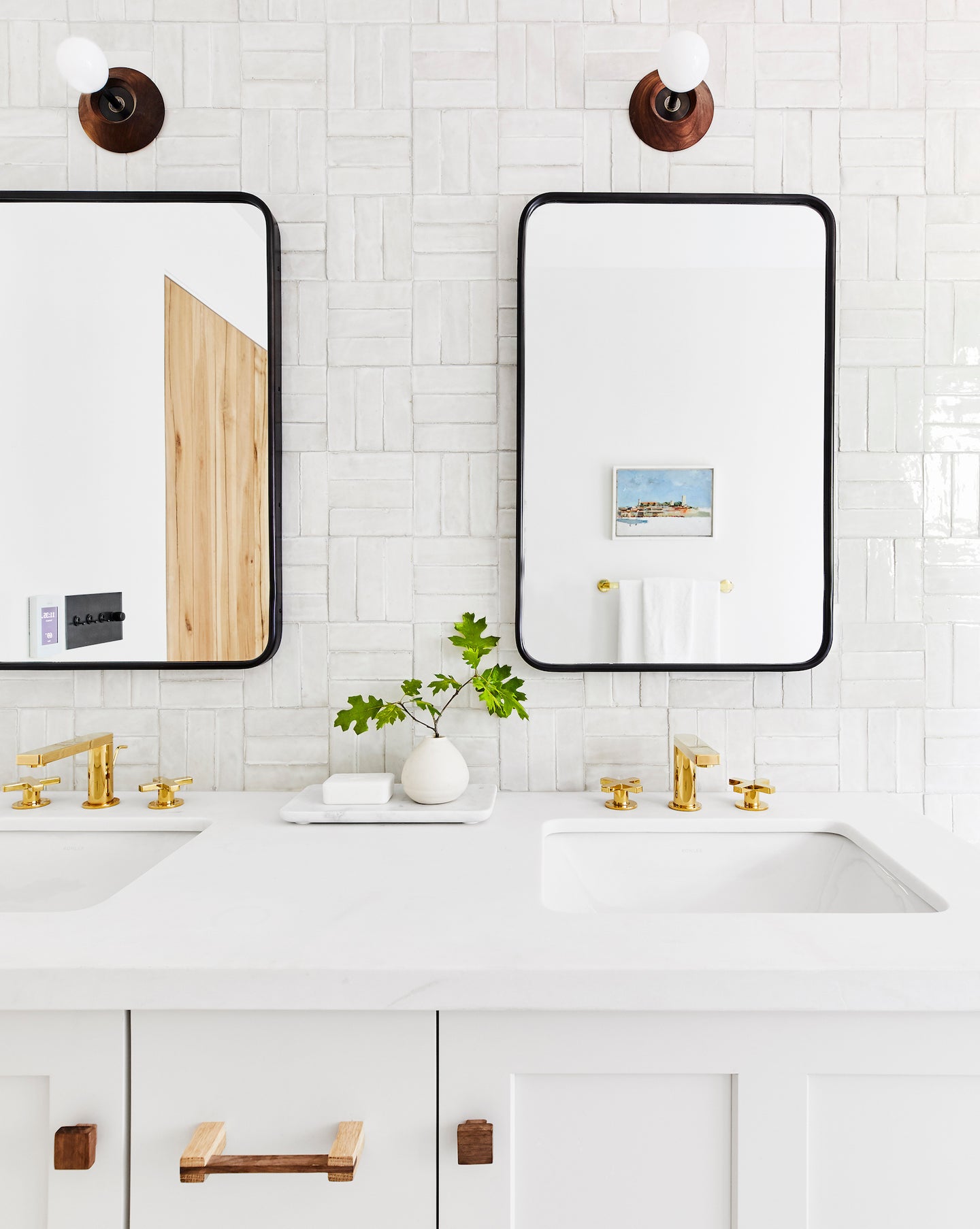What We’ve Learned From Renovating Hundreds of Bathrooms
And the seven major mistakes to avoid.
Updated Oct 11, 2018 10:25 AM
We may earn revenue from the products available on this page and participate in affiliate programs.
Brown tiles, a stained tub, peeling wallpaper—some bathrooms are just begging for a good gut job, especially if they look like relics of decades past. But while it’s easy to get sucked into a black hole of inspiration online, making your dream space a reality is often anything but.
“We spoke to so many homeowners who were bewildered about how to renovate in the first place,” says Koda Wang, cofounder of Block, a renovation startup. “They were hiring random contractors and had no idea what they were going to get, how long it was going to take, what it was going to look like, or what the quality was going to be. And they were spending tens of thousands of dollars.”
Together with Casper cofounder Luke Sherwin, Wang (formerly the chief customer officer at Rent the Runway) set out to streamline every step of the process, from conceiving your dream shower to making sure tiles don’t peel off the walls in six months’ time. In just two short years, the company has already completed hundreds of remodels.
But what makes a reno successful? What are the top blunders people make? And how can you avoid them? Here, Paul Morimoto, head of design experience and operations at Block, shares his top tips.
Don’t Go for the Lowest Bid
“This one tops many common-mistakes lists for good reason,” says Morimoto. While a cheaper amount may seem enticing up front, it can often lead to inexperienced pros or additional costs down the road. High-quality help is always worth a little extra money.
Understand Where to Save a Few Bucks
Knowing where not to skimp also means saving a few dollars in the long run. By keeping your existing layout, plumbing and all, you’ll minimize the price of things you can’t even see (like new pipes, which aren’t cheap), while also reducing the chance that something could go wrong during construction.
Set Realistic Goals (and Be Flexible)
It’s not uncommon to change your mind once demolition begins. And there will almost always be unforeseen surprises that impact design, so be mindful of that from the start and set a little extra aside for emergencies. “Generally, projects where realistic expectations aren’t set and reset cause the most headaches,” says Morimoto. If you make major alterations on demo day, adjust your timeline and budget.
Step Away From Funky Finishes
Let’s face it: Some materials are timeless, but others make most people cringe after just a few years (we’re looking at you, shag-carpeted pedestal tubs). Be mindful of trends that are hard to replace and could quickly look outdated or off-putting to future buyers. Morimoto suggests paint and light fixtures as good—and impermanent—ways to inject your personality. For the rest, try playing it a little safer.
Make a List (and Check It Twice)
Write down your nonnegotiables at the very start (and make sure it’s driven by how you use your room, not just the styles you gravitate toward). “It’s easy to become exhausted by all the decisions, and you can easily lose track of why you set out on the project in the first place,” explains Morimoto. Having everythingon paper will help you prioritize.
Plan Your Storage Wisely
You don’t need to stuff your entire linen closet in the bathroom, just as you don’t need to keep every last beauty product in your medicine cabinet. “Be intentional about what you need,” says Morimoto. “More storage isn’t necessarily better.” Then look for solutions like vanities with multiple drawers or niches that you can carve out in hollow walls.
Don’t Just Go for Looks
When shopping for floors, consider durability as much as style. Morimoto recommends porcelain, which is generally more durable than ceramic and less porous and care-intensive than natural stone. He also suggests avoiding any material that isn’t specifically made for flooring applications. “Smaller tiles have more grout and can be more work to maintain,” he warns. Add that to the list of small mistakes that you can easily avoid now that you’re a semipro.
Read more stories like this one: What I’ve Learned From Renovating 100 Historic Homes For a Reno With Staying Power, Rethink These Tempting Trends I’ve Renovated More Than 70 NYC Apartments—This Is the Mistake I Always Notice
